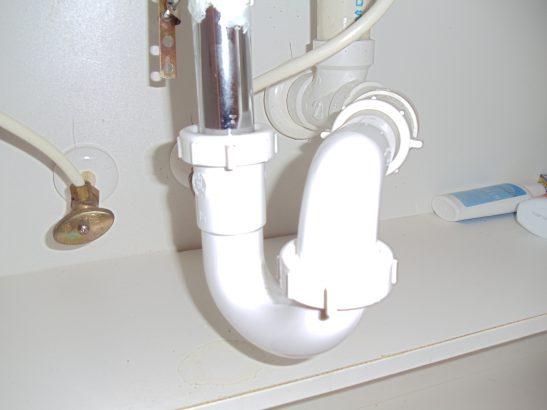One of the more mysterious pipe fittings to newcomers in the world of home plumbing is the p-trap. This fitting has a very specific function and though it is often the source of many common plumbing problems, you would not want to live without it.
Your bathroom sink p-trap is a small, u-shaped piece of pipe in the cabinet connected to your drain, and an important part of your plumbing. The p-trap blocks sewer odors and gases from rising up through the open drain hole. How does it do this?
The p-trap, due to its unique shape, holds water which blocks gases from seeping up through your drain. The water in the bottom of the u-shaped plumbing fitting is actually like a barrier for the gas.
Gravity pushes water down through the u and out into the drain, however, every time you operate the faucet. Since the water pressure moving down the drain is greater than the forces holding the water in the p-trap, water passes steadily through it.
The p-trap must be installed a certain distance from the drain hole, in order for this phenomenon to occur. The distance of the p-trap from the sink drain hole depends on the width or diameter of the p-trap pipe.
In most homes, a 1 1/2 inch p-trap is used on both kitchen and bathroom sinks. This sized trap requires 16 to 18 inches of space between the drain and p-trap.
Since the p-trap is always filled with water the p-trap often clogs or grows fungus and bacteria, making a stench of its own. When it clogs up or becomes choked with fungus, it is time to replace the p-trap.
